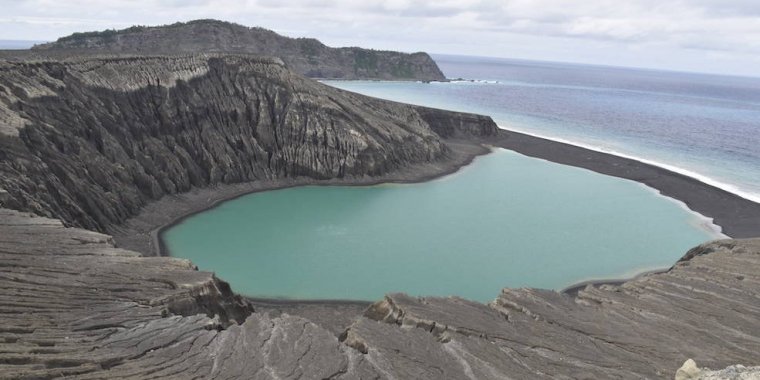| News / Space News |
NASA Shows New Tongan Island Made of Tuff Stuff, Likely to Persist Years
In late December 2014, a submarine volcano in the South Pacific Kingdom of Tonga erupted, sending a violent stream of steam, ash and rock into the air.

View from the top of tuff cone of the new Tongan island, June 2017. Image credits: NASA/Damien Grouille/Cecile Sabau
The ash plumes rose as high as 30,000 feet (9 kilometers) into the sky, diverting flights. When the ash finally settled in January 2015, a newborn island with a 400-foot (120-meter) summit nestled between two older islands – visible to satellites in space.
The newly formed Tongan island, unofficially known as Hunga Tonga-Hunga Ha'apai after its neighbors, was initially projected to last a few months. Now it has a 6- to 30-year lease on life, according to a new NASA study.
Hunga Tonga-Hunga Ha'apai is the first island of this type to erupt and persist in the modern satellite era, it gives scientists an unprecedented view from space of its early life and evolution.
The new study offers insight into its longevity and the erosion that shapes new islands. Understanding these processes could also provide insights into similar features in other parts of the solar system, including Mars.
The Tongan island is the third “surtseyan” volcanic island in the last 150 years to emerge and persist for more than a few months. Surtsey is an island that began forming during a similar kind of explosive, marine eruption off the coast of Iceland in 1963.
The most dramatic changes to the island occurred in its first six months. Initially, the new island was relatively oval and attached to its neighboring island to the west. However, by April analysis of satellite imagery found that its shape had changed dramatically.
In May, the southeastern rim of the interior crater wall was washed over by the Pacific Ocean, opening the crater lake to the ocean.
By June, satellite imagery showed that a sandbar had formed, closing off the crater. While the island continued to evolve, it was more stable by late 2016.
The new island is perched on the north rim of a caldera on top of an underwater volcano that stands nearly 4,600 feet (1,400 meters) above the surrounding the sea floor. (NASA)
YOU MAY ALSO LIKE




